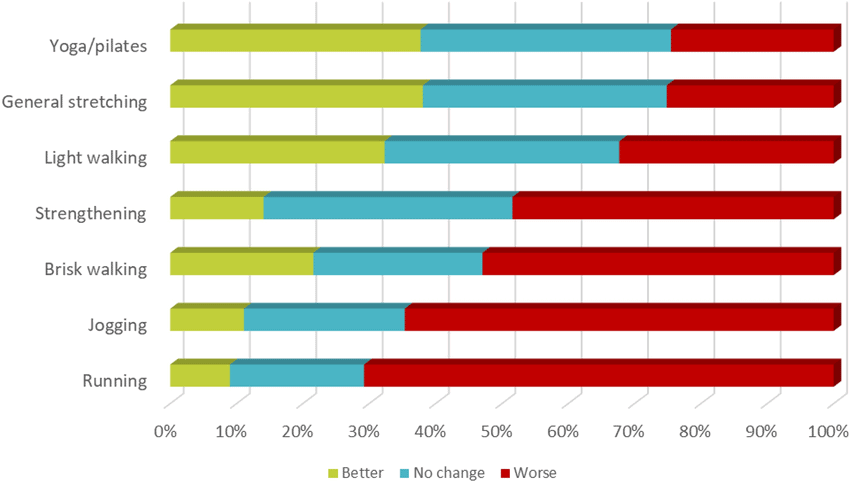High Impact Exercise More Likely to Worsen Dystonia
The benefits of exercise and physical activity for neurological disorders is well-known. Individuals with dystonia may experience numerous barriers to healthy levels of exercise, including the fact that physical activity sometimes worsens dystonia symptoms. A team of exercise scientists and physical therapy experts at University of Auckland in New Zealand conducted a survey of 260 dystonia patients about physical activity and barriers to exercise. The survey revealed that lower intensity exercise, such as light walking and general stretching, were among the least aggravating for dystonia symptoms.
The table below shows the percentage of survey participants who answered ‘better’ (green), ‘no change’ (blue), and ‘worse’ (red) for each activity. Higher impact exercise tended to worsen dystonia, while low impact exercise may be beneficial, or at least not aggravating, for two-thirds of dystonia patients.
McCambridge A, Meiring RM, Bradnam LV (2019) Physical activity, sedentary behavior, and barriers to exercise in people living with dystonia. Front Neurol 10:1121
Bradnam, L.V., Meiring, R.M., Boyce, M. et al. Neurorehabilitation in dystonia: a holistic perspective. J Neural Transm (2020).
The Dystonia Medical Research Foundation is a 501(c)(3) non-profit organization dedicated to advancing research for improved dystonia treatments and ultimately a cure, promoting awareness, and supporting the well-being of affected individuals and families.




